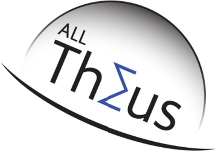Helioseismologists vs Spectroscopists - The Solar Abundance Debate
The Solar Abundance Problem / Question?
As our growing fleet of astronomical instruments continue to explore the Universe what we know about our own sun is used as a benchmark to extrapolate the characteristics of other stars and even exoplanets.
Now, astronomers regard anything heavier than hydrogen and helium as metals (see Note 1) with helioseismologists and spectroscopists disagreeing with each other as to the amount of metals in the sun.
Initially both helioseismologists and spectrocopists calculated the Sun was made up of about three quarters hydrogen, about a quarter helium and about 1.8% metals. However when the spectroscopists improved their measurements of the Sun’s spectra and modelling of the Sun’s thermal equilibrium they consequently dropped their metals estimate down to 1.3% of the Sun’s mass. Not much you would think, until you realise that’s about 1500 Earths – worth of mass! (Have a listen to Fraser Cain discussing this with Colin Stuart on a 13 Oct 2022 Universe Today podcast here).
Spectroscopists measure the elemental composition of the sun by studying its spectra – breaking down the light into ‘rainbow’ colours. When photons from the sun’s core passes through different elements inside the sun some light energy is absorbed and / or re-emitted by these elements. The ‘rainbow’ then has dark lines where the photons are being absorbed or brighter emission lines where the photons are being energized by different elements. We can say then that these spectra give a chemical ‘fingerprint’.
Where spectrocopists see photons emitted from the sun’s surface the helioseismologists look deeper into the sun, just as terrestrial seismologists study the Earth’s inner structure, analyzing how sound waves travel through the subsurface. The sun’s sound waves are very precisely linked to the temperature and if there is more metal this will also change how sound waves propagate through our Sun. Heliologists measurements are so good now that we can even ‘see’ sunspots on the back of the Sun!.
The disputed amount is important because metals play an oversized role in the sun. Less metal would imply a lower mass and diameter of stars by about 10% and the age of the Sun by about 20%. Early stars had very little metal whereas as the universe aged more stars had more metal, and even half a percent can make a difference!
QUOTE: “I love it when scientists argue with each other, that’s how scientific progress works”
Dr Adam Rutherford
By leveraging the research and observations from the Parker Solar Probe (which ‘touched’ the Sun in 2022?), the Solar Orbiter (studying CME’s and other solar phenomena) and the Daniel K Inouye Solar Telescope ("DKIST") on Maui in Hawaii we should be able to get a better estimate of the suns metallicity to resolve the solar abundance problem and therefore be better able to calibrate other stars and their systems.
Note A - Fortunately for us, chemists take a more precise view of condensed matter examining the periodic table in lots more detail and help make our modern materials
Podcasts
Can The Parker Solar Probe Shed Light On The Sun? Daniel & Jorge Explain The Universe
Books
Rebel Star: Our Quest To Solve The Great Mysteries Of The Sun Colin Stuart
Music of the Sun: The Story of Helioseismology (Oneworld Publications, 2006) William Chaplin,
Jorge Cham of PhD Comics illustrates the Parker Solar Probe’s mission to touch the sun
https://physics.aps.org/articles/v14/178
